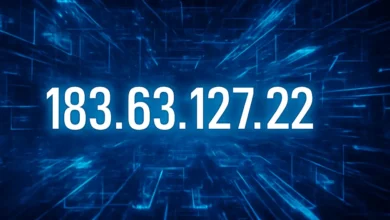PLFTiger — What It Is, How It Works, and Why It Matters

Introduction
PLFTiger is an emerging technology name you may start hearing more often. At its simplest, PLFTiger refers to a modern software concept and platform that combines artificial intelligence, cybersecurity, and platform engineering to help organizations protect data and speed up digital work. Articles about PLFTiger started appearing in many tech outlets during 2025 as companies and authors tried to explain the same big idea in different ways.
This article explains PLFTiger in plain English for readers of all ages. You’ll learn what it means, the main parts that make it work, real-world uses, questions people ask most often, and practical tips if your team is thinking about trying it.
What is PLFTiger?
PLFTiger is best thought of as a modular technology platform that mixes several modern capabilities into one stack:
- AI & machine learning that looks for strange patterns and helps automate decisions.
- Cybersecurity features that aim to detect and stop attacks faster than older tools.
- Platform engineering tools that package deployment pipelines, observability, and automation so engineering teams can ship safely.
Several recent write-ups describe PLFTiger as a next-generation tool for protecting digital assets while also giving teams better visibility and control over their systems. That combination — protection plus productivity — is the central promise of PLFTiger.
Core components (H3 subheadings)
1. Smart detection (AI + ML)
PLFTiger uses trained models to watch system behavior and spot anomalies. Instead of waiting for an alert from a rule someone wrote, the platform tries to learn “normal” patterns and flag what’s different.
Key benefits:
- Faster detection of unusual logins or data movement.
- Fewer noisy alerts for security teams.
- Ability to suggest remedial steps automatically.
2. Multi-layered security
The platform ties together several defenses (network controls, identity checks, encryption, and monitoring) so attackers face barriers at many levels.
Typical features:
- Encrypted storage and communications.
- Role-based access controls and identity monitoring.
- Automated containment of suspicious activity.
3. Platform engineering & automation
PLFTiger packages deployment pipelines, infrastructure templates, and observability tools so development teams can deploy safely and repeatably.
Why that matters:
When engineers reuse tested patterns, they reduce human error and speed up delivery — while the platform keeps an eye on security posture.
4. Interoperability and modularity
The system is usually described as modular: you can plug in only the parts you need (for example, only the security layer or only the automation layer) and expand later as needs grow.
Who should care about PLFTiger?
- Small and medium businesses that want enterprise-style protection without huge staff.
- Engineering teams seeking repeatable deployment patterns and better observability.
- Security teams that want smarter alerts and AI assistance.
- Industry sectors with sensitive data: finance, healthcare, retail, and government.
If your organization wants to reduce friction between speed (shipping software) and safety (protecting data), PLFTiger-style platforms are relevant.
Real-world uses & examples
While PLFTiger is still an emerging brand/concept in 2025, articles show people applying the idea in these ways:
- Banking — Monitoring transactions and access patterns to block fraud.
- Healthcare — Protecting patient records while enabling analytics.
- Cloud operations — Automating safe deployments and rolling back risky changes.
- IoT & aviation — Using strong device identity and anomaly detection to secure machines and aircraft systems.
Strengths and limitations
Strengths
- Proactive defenses — AI can predict and act faster than manual rules.
- Developer-friendly — Built-in pipelines and templates reduce repetitive work.
- Unified view — Security, observability, and automation in one place.
Limitations & cautions
- New and evolving — Many write-ups come from small outlets and early adopters; the landscape is still forming. There is limited official documentation from a single authoritative company site at the time many articles were published. That means buyers should ask for demos, references, and security audits.
- False positives — AI systems still need tuning to avoid flagging safe activity as suspicious.
- Integration complexity — Connecting with legacy systems can take work and planning.
How teams evaluate PLFTiger-style platforms
If you’re considering a PLFTiger-style solution, use a checklist:
- Does the vendor provide third-party security audits (SOC 2, ISO 27001)?
- Can you run a proof of concept in a safe test environment?
- How does the platform handle data privacy and encryption?
- What is the support model and developer documentation like?
- Are SLAs (service-level agreements) and rollback procedures clear?
Ask for measurable proof: sample detection times, false-positive rates, and case studies.
Practical tips for adoption
- Start small — pick one use case (e.g., identity monitoring) to test the platform.
- Use real data in a sandbox — realistic tests reveal integration gaps.
- Train staff — give security and dev teams time to learn the product’s workflows.
- Measure outcomes — track mean time to detect (MTTD) and mean time to respond (MTTR).
- Demand transparency — ask vendors about model training data, update cadence, and governance.
Images and visuals (found online)
Below are images and visuals that appeared with PLFTiger articles and write-ups online (images were located on small tech publications and blog posts). These images show promotional artwork and logos associated with PLFTiger coverage. Use them only for reference — confirm licensing before reuse.
- PLFTiger feature image on USA Magazine Break.
- AI & cybersecurity shield artwork used by TechHuda.
- Stars Magazine PLFTiger header image.
FAQ (Frequently Asked Questions)
Q: Is PLFTiger a single company product or a broader idea?
A: Right now, PLFTiger appears as an emerging platform concept described by multiple outlets. Some articles present it as a specific product (cybersecurity + platform engineering), while others treat it as a broader movement in 2025. Because public, centralized documentation is limited, it’s best to treat PLFTiger as a class of solutions until official vendor materials are available.
Q: Is PLFTiger safe for small businesses?
A: The idea behind PLFTiger is to bring enterprise-grade tools to smaller teams. Safety depends on the chosen implementation and proper configuration. Start with a limited pilot and verify third-party audits.
Q: Will PLFTiger replace my existing security tools?
A: Not immediately. It’s usually designed to complement existing tools and consolidate workflows over time. Migration should be planned and gradual.
Q: Where can I find official documentation?
A: As of recent reporting, most information appears in news posts and blog write-ups rather than a single authoritative corporate site. Ask vendors for whitepapers, compliance certificates, and demos.
Conclusion
PLFTiger is an interesting and timely idea: a platform that blends AI-driven detection, multi-layered security, and platform engineering automation to help teams operate faster and safer. Because it’s an emerging theme in 2025, information is spread across many smaller tech outlets and early press pieces — so do careful vendor due diligence before committing.
If your team cares about reducing risk while increasing speed, keep watching the PLFTiger space and test any solution with a measured pilot.
Stay in touch to get more updates & alerts on Magbuz! Thank you




